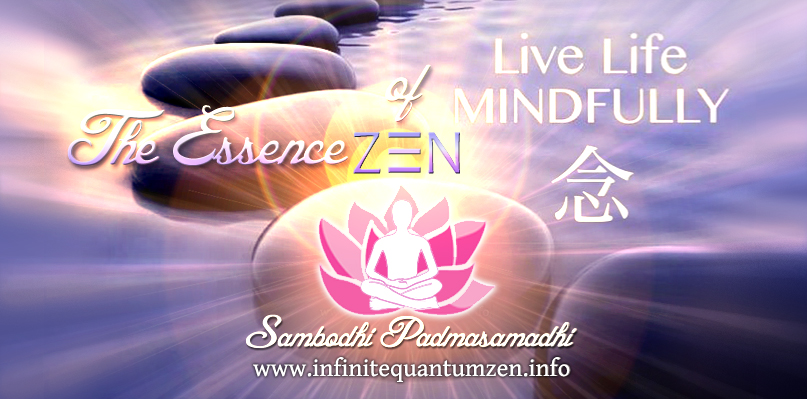 |
| ~ ∞ ~ The Essence of Zen - Awaken the Living Awareness Within ~ ∞ ~ |
Myth of Myself is a lecture from the Tao of Philosophy series. It delves deep into the mystery of self and the sensations of ego; comparing Western and Eastern mythologies of how "I" came to be. Did God create us with intention? Did blind forces of the universe collide together and in the process churn out people as a byproduct? The Tao of Philosophy album is part of the Essential Lectures Collection and began its life as the first essential lecture series in 1972 after Alan Watts asked his son Mark to compile a collection of core talks. The series looks at issues of identity, our place in nature, and the limits of symbolic thinking.
I believe that if we are honest with ourselves, that the most fascinating problem in the world is “Who am I?” What do you mean, what do you feel when you say the word “I”, “I, Myself”? I do not think there can be any more fascinating preoccupation than that because it is so mysterious, it’s so elusive. Because what you are in your inmost being escapes your examination in rather the same way that you can not look directly into your own eyes without using a mirror, you can’t bite your own teeth, you can’t taste your own tongue and you can’t touch the tip of this finger with the tip of this finger. And that is why there is always an element of profound mystery in the problem of who we are. This problem has fascinated me for many years and I have made many enquiries “What do you mean by the word I?” And there is a certain consensus about this, a certain agreement, especially among people who live in Western civilization.
Most of us feel “I” – ego, myself, my source of consciousness – to be a center of awareness and of a source of action that resides in the middle of a bag of skin and so we have what I have called the conception of ourselves as a skin-encapsulated ego. It is very funny how we use the word “I”, if we just refer to common speech, we are not accustomed to say, “I am a body.” We rather say, “I have a body.” We do not say, “I beat my heart” in the same way as we say, “I walk, I think, I talk.” We feel that our heart beats itself, and that has nothing very much to do with “I.” In other words, we do not regard “I, myself” as identical with our whole physical organism. We regard it as something inside it, and most Western people locate their ego inside their heads. You are somewhere between your eyes and between your ears, and the rest of you dangles from that point of reference. It is not so in other cultures. When a Chinese or Japanese person wants to locate the center of himself, he points (here, not here, here) to what Japanese call the kokoro or the Chinese call shin, the heart-mind. Some people also locate themselves in the solar plexus, but by and large we locate ourselves behind the eyes and somewhere between the ears.
Western man has, for many centuries, been under the influence of two great myths. When I use the word “myth” I don’t necessarily mean falsehood. To me the word myth signifies a great idea in terms of which man tries to make sense with the world; it may be an idea, it may be an image. Now the two images which have most profoundly influenced Western man are: number one – the image of the world as an artifact, like a carpenter’s table or a jar made by a potter. Indeed, in the Book of Genesis there comes the idea that man was originally a clay figurine made out of the Earth by the Lord God who then breathed into this clay figurine and gave it life. The whole of Western thought is profoundly influenced through and through by the idea that all things – all events, all people, all mountains, all stars, all flowers, all grasshoppers, all worms, everything – are artifacts; they have been made. And it is therefore natural for a Western child to say to its mother, “How was I made?” That would be quite an unnatural question for a Chinese child, because the Chinese do not think of nature as something made. They look upon it as something that grows, and the two processes are quite different. When you make something you put it together: you assemble parts, or you carve an image out of wood or stone, working from the outside to the inside. But when you watch something grow, it works in an entirely different way. It doesn’t assemble parts. It expands from within and gradually complicates itself, expanding outwards, like a bud blossoming, like a seed turning into a plant...








